How to set water hardness in a Midea dishwasher
 Usually, dishwasher owners are confident that they can set the water hardness settings once after purchasing household appliances, and never return to them again. But this opinion is erroneous, because the hardness of tap water is not constant and changes from time to time, which affects salt consumption, reducing or increasing it. In this article we will look in detail at what the water hardness setting should be in a Midea dishwasher, when it should be changed and how.
Usually, dishwasher owners are confident that they can set the water hardness settings once after purchasing household appliances, and never return to them again. But this opinion is erroneous, because the hardness of tap water is not constant and changes from time to time, which affects salt consumption, reducing or increasing it. In this article we will look in detail at what the water hardness setting should be in a Midea dishwasher, when it should be changed and how.
What do you click to set the correct parameters?
It often seems to new PMM buyers that it is very difficult to set the hardness in the dishwasher for the first time, because they have never encountered such a process before. However, there is nothing difficult in setting up if you know exactly the procedure. Our instructions will help you with this.
- Open the wash chamber door and activate the dishwasher with the power button.
- Press and hold the operating cycle selection button for five seconds, which will activate the mode for setting the hardness with which the ion exchanger will have to work.
You will know that the water softener setting mode is activated when the rinse aid indicator starts flashing actively.
- Now you need to press the button to select a setting that will switch hardness modes in the order from H1 to H6, where the first indicator is calculated for water with a hardness of up to 5 dH and with zero salt consumption, and the last - for water with a hardness of more than 35 dH and with a consumption of 60 grams salts in one working cycle.
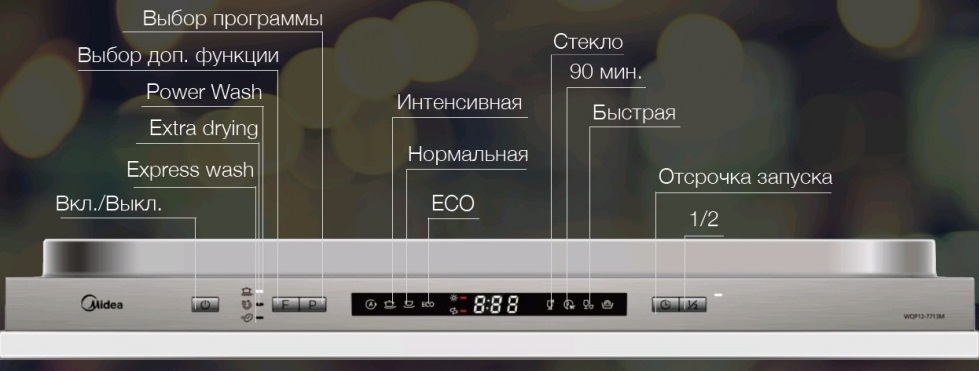
- Now all that remains is to press the power button so that the setup is completed and the machine remembers the selected indicator.
The hardness level should always be selected according to the actual water in your water supply. If you go too far with the settings, the salt will be wasted, which is why you will have to buy this product more often, and if you try to save money, then there may not be enough salt to regenerate the ion exchange resin in the ion exchanger, which is why the part may even fail.
How to independently determine the condition of the water?
The condition of the water is very easy to find out if you live in a large city. In this case, you can simply go from time to time to the official website of the local water utility, which is obliged to regularly publish current data on water quality, and change the hardness settings if they have changed in the city due to the time of year. If you live in a small town or village, you will have to obtain information about water quality yourself. We list the most popular and accessible methods for checking hardness.
- The study of mass, for which you need to compare the mass of liquid taken from different sources. You need to fill several identical containers with different waters and then weigh the types of liquid. The greater the mass of water, the harder it is. This is far from the most accurate way to determine hardness, but it is reliable, providing at least minimal data in conditions where there is no information about the quality of the water supply.
- Determining soapiness is a method using ordinary laundry soap, which should be wetted, and then soap your hands with it. If the water in the tap is hard, then the laundry soap will be difficult to foam. On the contrary, if the water is of high quality and soft, then there will be a lot of foam, and it will be washed off slowly.
- The appearance of scale is another indicator by which the properties of tap water can be determined.If scale and sediment often form in the kettle, and limescale deposits appear on the taps, then you have low-quality hard water at home, which will need to be dealt with.
- Cloudiness is another method that indicates the presence of hard water, but without the specific information needed to fine-tune the dishwasher. You should take a whole clear bottle of water, put it in a dark place for two days, and then carefully examine the container. If a film and cloudiness have formed on the walls of the bottle, this indicates high water hardness.
- Finally, test strips are the most accurate way to determine hardness, which needs to be discussed separately.
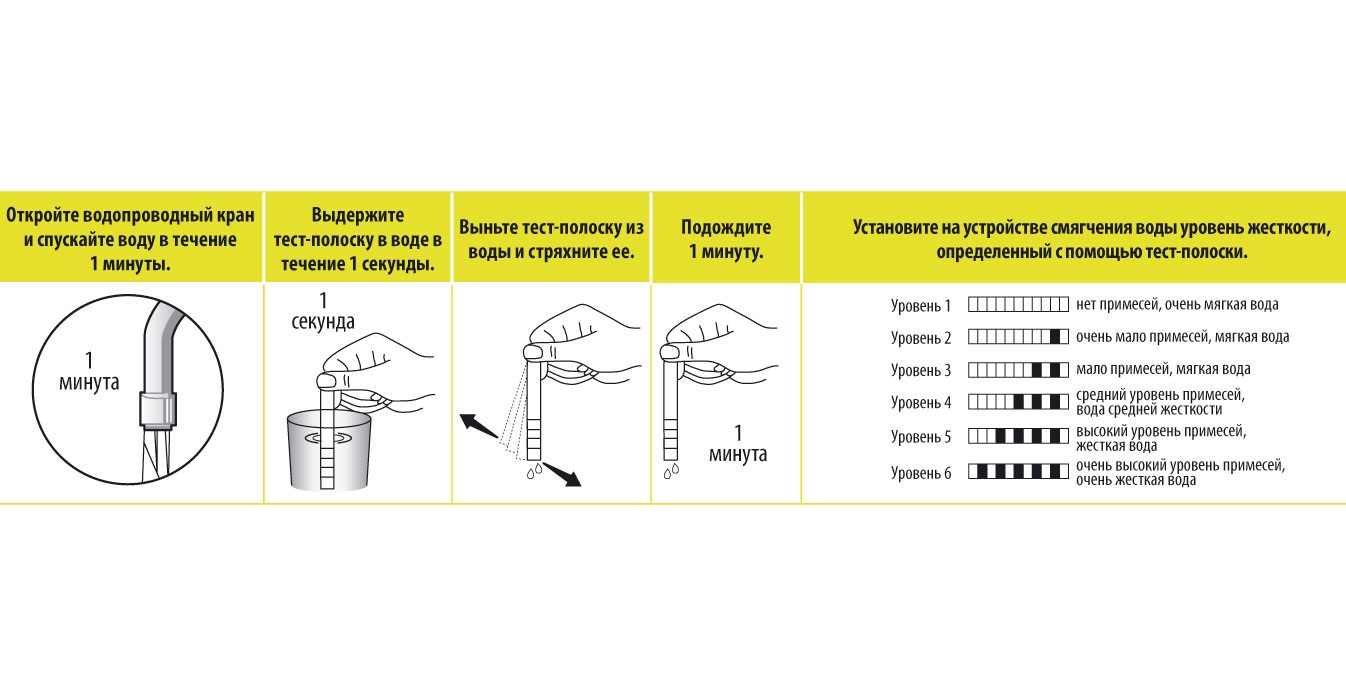
These disposable strips are an objective way to check water quality, so experts recommend using it. Most often on the market there are strips impregnated with a special composition. Such a device should be immersed in water for one second, and then compare the resulting color with the instructions, which list all the possible colors of the strip and what hardness they represent.
A little more reliable are the strips from the Biosensor Aqua company, which need to be immersed in water for a few seconds and wait about a minute until the strip changes color. After this procedure, you also need to check the color with all the possible results described in the table.
The most difficult thing is the strips, which need to be used in conjunction with special reagents. In this case, you need to take a glass of water, place a test strip in it, and then slowly add the reagent. When the color appears on the tester, it must be compared with the information in the instructions to find out the water hardness.
The most reliable way to test is a TDS meter, which is more expensive than test strips, but it is not disposable and is also more accurate.
Thus, test strips remain the best option to quickly find out the indicators of tap water. Subjective assessment methods will not provide the necessary data for setting up a dishwasher; an expensive electronic tester is not needed in conditions where you need to test the water only a few times a year, but disposable test strips are almost as accurate as a TDS meter, but are much cheaper.
Interesting:
Reader comments
- Share your opinion - leave a comment
Categories
Washing machine repair


For buyers

For users

Dishwasher



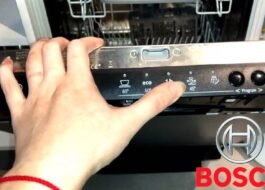
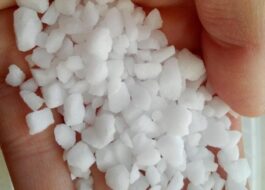
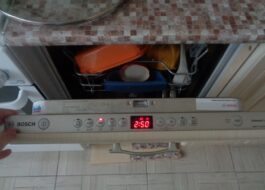
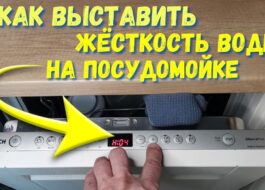










Add a comment